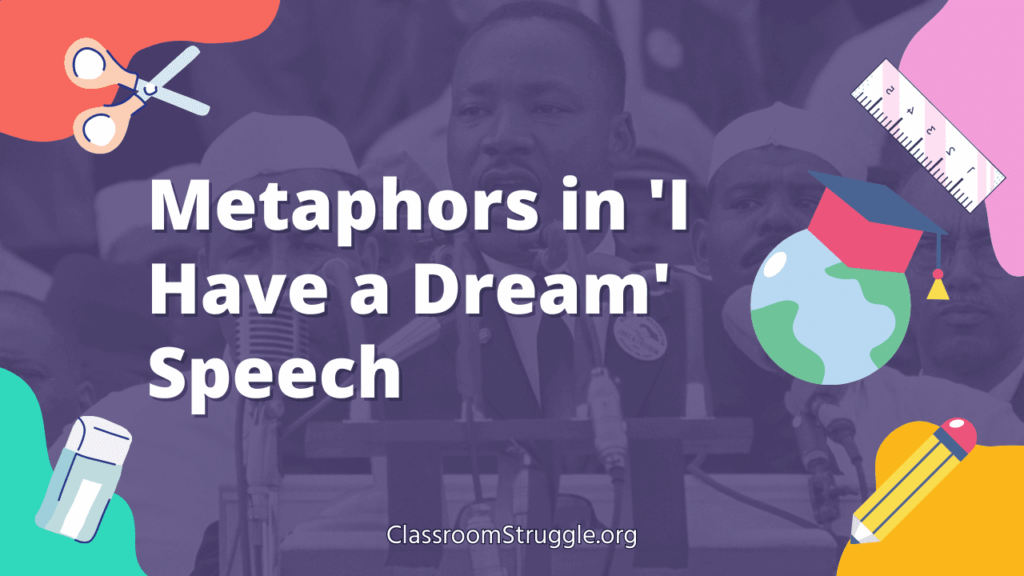In this article, we will explore the powerful use of metaphors in Martin Luther King Jr.’s “I Have a Dream” speech.
This speech is widely recognized as a masterpiece of American rhetoric, and its use of metaphor is a significant reason for its enduring impact.
By analyzing the metaphors in this speech, we can gain a deeper understanding of how metaphors can be used to inspire, persuade, and move an audience.

Metaphors in Martin Luther King Jr.’s “I Have a Dream” Speech
King’s use of metaphors in “I Have a Dream” is both powerful and deliberate. He uses metaphors to evoke strong emotions, create vivid imagery, and make complex ideas more accessible to his audience.
Below are some of the most significant metaphors in the speech:
“A dream”
King repeats the phrase “I have a dream” throughout the speech, using it as a metaphor for the future he envisions for America. The use of the word “dream” is powerful because it taps into the audience’s emotions and inspires hope for a better future.
“Injustice”
King uses the metaphor of injustice to describe the systemic racism and discrimination that African Americans faced in America. By framing racism as an injustice, King appeals to his audience’s sense of morality and urges them to take action to right this wrong.
“Bank of Justice”
King uses this metaphor to describe the idea of a just society. He argues that just as a bank should give people what they are owed, so too should society give people the rights and freedoms they are owed as citizens.
“Lone Island of Poverty”
King uses this metaphor to describe the poverty that many African Americans faced in America. He argues that just as no one can live alone on an island, so too should we not allow anyone to live in poverty while others prosper.
By using metaphors in this way, King creates powerful, emotional connections with his audience and makes complex ideas more accessible and memorable.
The Impact of Metaphors in King’s Speech
The use of metaphors in King’s speech was crucial to its success. By using vivid and emotional language, King was able to inspire his audience to action and to create a lasting impact on American society.
The use of metaphors also allowed King to make complex ideas more accessible, reaching a broader audience and making it easier for people to understand and engage with his message.
Conclusion to Martin Luther King Jr.’s “I Have a Dream” speech
Martin Luther King Jr.’s “I Have a Dream” speech is a masterpiece of American rhetoric, and its use of metaphors played a significant role in its success.
By analyzing the metaphors in this speech, we can gain a deeper understanding of how metaphors can be used to inspire, persuade, and move an audience.
As we continue to strive for a more just and equitable society, King’s use of metaphors remains a powerful example of the role that language can play in effecting change.
